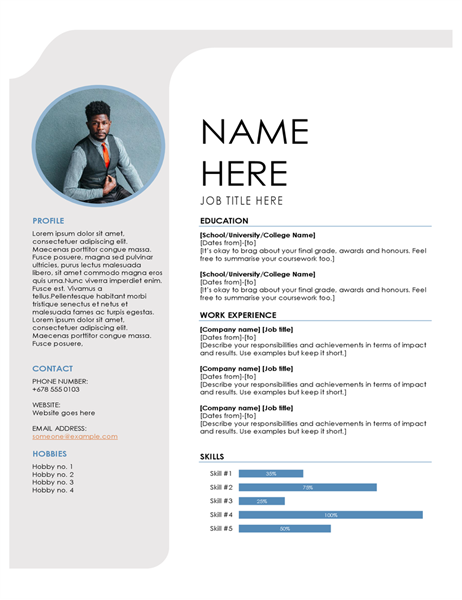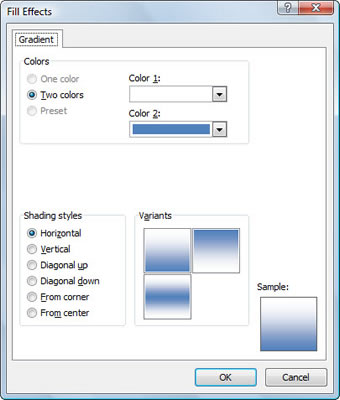Working with color themes in Microsoft Office can open up a whole world of possibilities for customizing your documents. Most people don’t realize how much they are already interacting with themes in Office, or how much control they can have with just a couple clicks. Let’s check it out. But first, a special thank you to Sheree for having some excellent color palette questions in an Excel Essentials session a couple weeks ago and inspiring this Byte.
- Shades and tints. After you select a color, light and dark shades of the accent color are created based on HSB values of color luminosity. Web parts and apps can use shade variations to create visual hierarchy and provide an indication of interaction.
- I've always wanted to know what the Default Font Color of MS-Word was. Dark Blue, Text 2, Darker 25%.

Exercise File
You can follow along on one of your existing documents, or if you would like a starting place, here is a Word document you can start with:
This is a Word document with a few visual elements that incorporate theme colors. These are all things that will be effected by altering the color theme.
In Microsoft Excel For Mac Which Color Is Blue-gray Text 2 Lighter. CountCellsByColor( range, color code) In this example, we use the formula =CountCellsByColor(F2:F14,A17) where F2:F14 is the range containing color-coded cells you want to count and A17 is the cell with a certain background color, a red one in our case.
Themes and Color Palettes
What does it mean to apply a color theme? In most of your Office programs, you are already using a color theme, whether you realize it or not. The default is the Office color theme. You see your theme colors in everything from the color options for your fonts, to your default headers, to tables and charts… and more.
In the test file you downloaded, you are seeing it in the headers, the chart, the icons and the table…
One of the easiest ways to check your current palette is to visit the Home tab, Font group, and click on the dropdwon arrow next to the Font Color.
Notice how there are Theme colors, and Standard Colors. The Theme colors display your current color palette. There are gradations underneath each main theme color…. lighter and darker versions of each of the theme colors to create contrast.
Change the Color Theme
Changing your color theme is simple!
1. Go to the Design tab, DocumentFormatting group. (By the way, this is also where you can go to change your default font settings for the document).
2. Select the Colors dropdown to see a full list of themes. Hover your mouse over each color palette to see a preview.
3. Select a color theme by clicking on it.
Because theme colors are utilized in so many ways in this document, we really see a change in appearance!
Custom Color Palettes
If you are artistically inclined, you might be interested in creating your own custom color themes.
1. In the Design tab, Document Formatting group, click on the Colors dropdown again, but instead of selecting a predefined color set, select Customize Colors…
2. Click on the dropdown beside any of the accent colors to make an alteration. Typically Accent 1 is the color you will see the most in a document.
3. You have the ability to select colors from a color wheel, or select More Colors to enter an exact RGB color.
4. When you are finished, name the color palette and click Save.
5. The new color set will appear in a new section at the top of the Colors dropdown called Custom.
Where Is Blue Gray Text 2 In Excel

You will be able to access this color palette anytime you create a new document on this computer.
Accessing Custom Color Themes in other Microsoft Programs
Once you have created a color theme that you like, you may want to access it in other programs. Microsoft knows this, so has made them accessible to you in many of your Office programs. They are in slightly different locations though, so let’s take a look.
PowerPoint
In Microsoft Excel Which Color Is Blue-gray Text 2017
In PowerPoint, you often see color themes even more prominently than in Word. Here is one popular theme called Berlin, that features a red and yellow color set.
1. In PowerPoint, visit the Design tab, Variants group.
2. Select the dropdown arrow in the lower right:
3. Here is where you will see your color theme options, plus the new custom color you just created in Word. Neat!

This definitely changes the look of this document…
Excel
In Excel, Color themes affect features like tables, charts, shapes, and fonts. The default in Excel is the Office color set as well. These colors should look familiar:
1. In Excel, visit the Page Layout tab, Themes group.
2. Select the Colors dropdown.
3. Here is your custom color theme again… no need to reinvent the wheel.
Outlook
Outlook? Did you read that right? Yep! Outlook also has the same themes and color sets you know and love from your other Office programs.
1. Open up a new email.
2. Visit the Options tab, Themes group.
3. Click on the Colors dropdown, and there you are…
Thoughts?
What do you think? Do you think you will utilize custom color themes in your Office documents? By the way, if you create a cool WSU themed color theme, I would love it if you would share it with me!
Congratulations, Power Users!
Congratulations to our newest Power Users! For the full gallery, and more information about the WSU Microsoft Office Power User Program, please visit: wichita.edu/poweruser
Madelyne Toney
Linda Claypool

Susan Johnson
Karen Wilson
Jaime Scherer
Jessica Casper
Cara Tucker
Linda Young (not pictured)
Comments are closed.